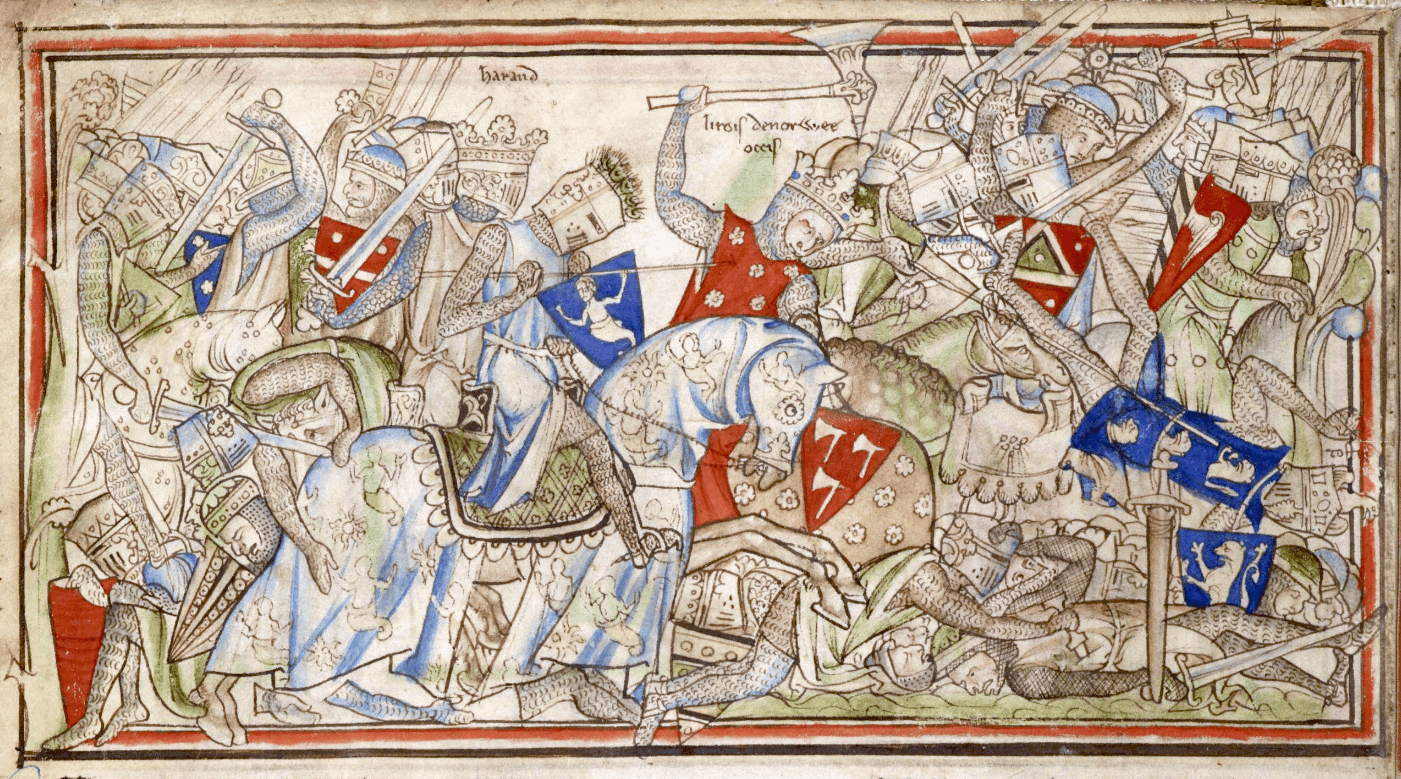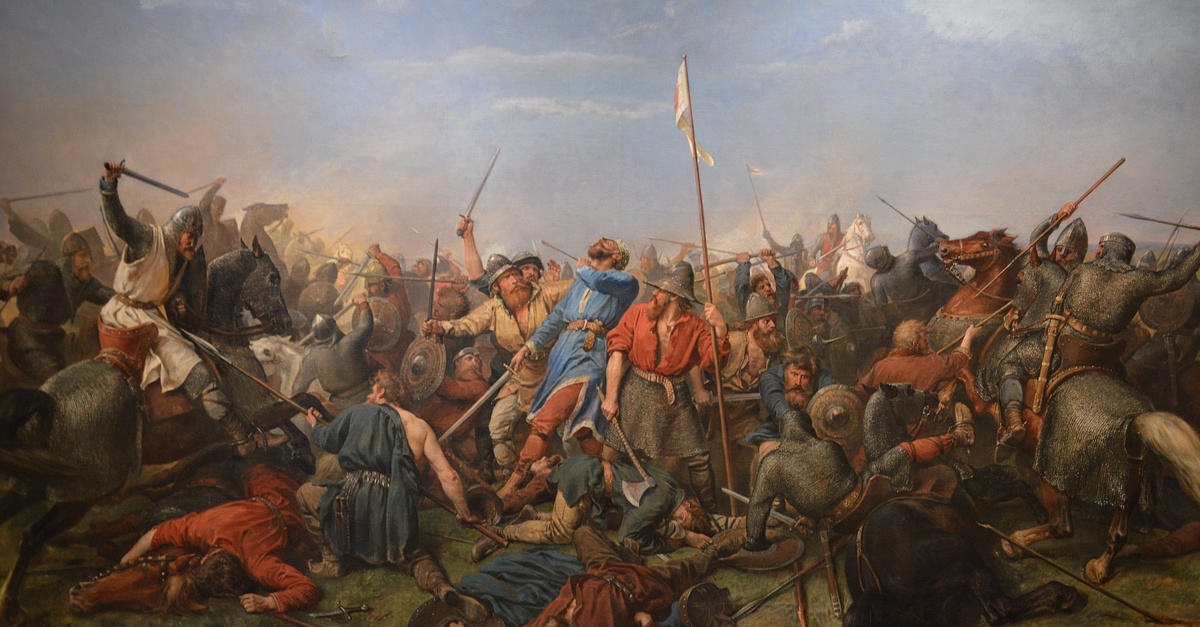Battle of Stamford Bridge
Background
The death of Edward the Confessor, with no heir, on January 5th, 1066, caused a struggle for who would succeed him as King of England. Harold Godwinson had himself crowned King the following day, but others also claimed the crown, including William, Duke of Normandy, and Harald Hardrada, King of Normandy.
By September of 1066, Harald Hardrada, with support from Tostig Godwinson, Harold Godwinson's younger brother, invaded Northern England and defeated an army led by Morcar, Earl of Northumbria, and Edwin, Earl of Mercia, at the Battle of Fulford, near York. Morcar and Edwin both managed to escape the battlefield, fleeing after the loss.
Following the Battle of Fulford, Harald Hardrada and Tostig Godwinson moved their army east of York to Stamford Bridge to rest and await the 150 hostages that the city of York agreed to provide to them if they did not sack the city.
At this same time, Harold Godwinson was in Southern England, awaiting an invasion from France by William, Duke of Normandy. Hearing of the invasion in the north, Harold Godwinson headed north with his housecarls and has many thegns as he could muster. He made the journey from London to Yorkshire in only four days, enabling him to take the Norwegians by surprise. The Norwegian army was utterly unaware that Harold Godwinson and his army were in northern England until the English army was in their sights at Stamford Bridge.

Battle
And so the Battle of Stamford Bridge was about to begin on September 25th, 1066. Before the battle, a single man rode up alone to Harald Hardrada and Tostig. He gave no name but spoke to Tostig, offering the return of his earldom if he turned against Hardrada. Tostig asked him what he would be willing to give Hardrada. The rider replied, "Seven feet of English ground, as he is taller than other men." Implying Hardrada and his army would be killed and buried on English soil. The rider then returned to the English Anglo-Saxon army.
Hardrada was impressed by the boldness of the rider and asked Tostig who it was. Tostig replied that it was, in fact, his brother, Harold Godwinson himself.
Though the Anglo-Saxon army under Harold Godwinson had caught the Norwegians by surprise, they still had to cross a small bridge over the River Derwent to engage Hardrada. They were delayed by a single Norwegian (possibly armed with a Dane Axe), who blocked the bridge and single-handedly held up the entire English army. It is said that he cut down 40 Englishmen before he was defeated when an English soldier floated under the bridge in a half barrel and thrust his spear through the bridge planks, killing the Norwegian soldier.
This gave most of Hardrada's army time to form a shield wall to face the English. Harold Godwinson's army crossed the bridge and formed a line across from the Norse army, locked shields, and charged. The battle raged for hours. In their haste to form a shield wall, the Norse army decided to leave their armor behind, which in the 11th century would have been a chainmail coat and not plate armor. Still, it left them more vulnerable, and eventually, they began to fragment, allowing the English to break up the shield wall and outflank them.

Harald Hardrada was killed with an arrow through his neck while fighting in a trance-like fury for which the berserkers were famous, and Tostig was slain, leaving the Norse army to be wiped out. The Norse were briefly reinforced by troops who had been guarding their ships at Ricall, who Eystein Orre led. Some of his men were said to have collapsed of exhaustion upon arrival on the battlefield. The remainder were fully armed and ready for battle. Their counter-attack, described in Norwegian tradition as "Orre's Storm," briefly stopped the English advance but was soon overwhelmed, and Orre was slain. Some of the Norse army is said to have drowned in the River Derwent while trying to escape the English pursuit.
Aftermath
King Harold Godwinson accepted a truce from the surviving Norwegians, which included Hardrada's son Olaf and Paul Thorfinnson, Earl of Orkney, who both were allowed to leave after pledging not to attack England again.
So many died in such a small area that the battlefield was said to have been still whitened with bleached bones 50 years after the battle. The Norwegians invaded England with a fleet of over 300 ships but left in only 24. It would be the end of the Viking Age in England.
Harold Godwinson had won the day and eliminated Harald Hardrada as a rival claimant to the throne, but as with Hardrada's short-lived victory after Fulford, Godwinson's time to enjoy the victory would also be short-lived, as just three days later, on September 28th, 1066, William, Duke of Normandy, and his army would land at Pevensey in Sussex, on England's southern border, ready to claim the crown.


 Eystein Orre †
Eystein Orre † 